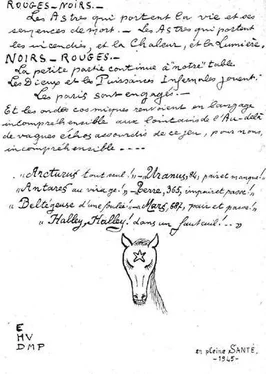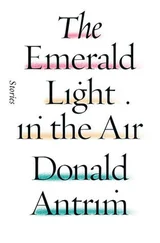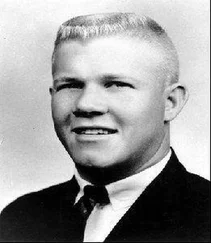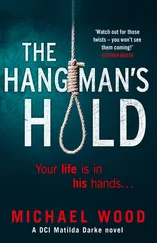Although Petiot usually balked at taking more than one or two people at a time, he agreed on this occasion, likely inspired by the fact that Jo could not be allowed back on the streets with the inside knowledge he had gained about the organization. He may also have been persuaded that the gangster carried a sizable fortune, which indeed he did: an estimated 1.4 million francs, some sewn into the shoulder of his suit, and an array of other valuables, such as signet rings, a gold watch, and gold, concealed in the heels of his shoe. Annette also wore a great deal of jewelry, not least a large emerald ring studded with diamonds. It was believed that the three planned to start a brothel in the new world.
From his window Fourrier watched them leave, headed in the direction of rue Tronchet. He never saw Jo, Annette, “Mademoiselle X,” François, or any of the gangsters and their mistresses afterward. Weeks after the departure, Pintard saw Petiot wearing Jo’s gaudy gold watch. It had been a gift, the doctor said.
“Really, did you not doubt what happened to the people you sent to Dr. Petiot?” Massu asked.
“Not at all,” Fourrier said, claiming that he had always believed that the physician was sending people to freedom. Massu, after the interview, felt a sudden need for a shower.
DESPITE the commissaire’s skepticism, Fourrier was not necessarily lying. Clandestine escape agencies were rampant in Occupied Paris, and several of them were run by doctors. There was, for instance, the network Vengeance, founded by Dr. Victor Dupont of the Red Cross and Dr. François Wetterwald, which worked to help Allied pilots evade capture and cross into Spain and Portugal with General Charles de Gaulle’s London-based intelligence service, Bureau Central de Renseignement et d’Action (BCRA). Another doctor, Sumner Jackson, the Maine-born head surgeon at the American Hospital in Paris, at Neuilly, concealed Allied pilots as patients in his hospital.
Many of the escape networks of the French Resistance worked with Allied intelligence organizations. Britain’s Special Operations Executive (SOE), founded in the summer of 1940, after the Fall of France, with the famous charge by Winston Churchill to “set Europe ablaze,” had established Section DF to focus on helping downed Allied pilots and other agents trapped behind enemy lines evade capture. At the time of Fourrier’s interview, Section DF was smuggling Allied soldiers out of France at an average rate of one agent a day.
British Military Intelligence Section 9 (MI 9), founded and led by Norman Crockatt, focused on helping British prisoners escape from enemy prisoner-of-war camps. This remarkable organization was later joined by the American Escape and Evasion Section MIS-X of the Military Intelligence Department and another staff branch called P/W & X. All of these Allied organizations and the French Resistance groups made important contributions, not least in saving men from gruesome torture, helping preserve Allied secrets, and also facilitating the return of experienced soldiers for later missions in the war against the Third Reich.
But not all evasion networks concentrated on military personnel, and several were known to specialize in helping Jews leave the country. Between the time of Petiot’s arrest by the Gestapo in May 1943 and the end of the Occupation, the Zionist Armée juive, for instance, would help at least 313 Jews cross through the Pyrenees into Andorra and then on to Barcelona. Two hundred and seventy-two of them continued on to Palestine. Other organizations had further specialized, such as the Éclaireurs israélites de France (EIF or Jewish Scouts of France) and the Oeuvre de secours aux enfants, a Jewish children’s welfare organization, both of whom rescued children from the Nazis.
Virtually every claim Fourrier made about Petiot’s supposed organization conformed to well-known features of genuine evasion networks. One of the most common paths out of the country was indeed through Marseille or over the rugged Pyrenees mountains. Smugglers had long used the narrow, steep shepherd trails, as had refugees fleeing the Franco regime at the end of the Spanish Civil War. The German seizure of the unoccupied zone in November 1942, however, had forced passeurs to seek out more difficult, higher altitude crossings amid fog, grueling winds, and the risk of avalanche and snowstorm as late as May, not to mention the more active border patrols with trained dogs.
There was the emphasis on departing in groups of two, or at most three, as Petiot had told Fourrier. The town house at 21 rue Le Sueur, with its private courtyard surrounded by high walls, was moreover better suited for shielding escapees than many of the attics, cellars, churches, and other safe houses used by Resistance groups. As for the hair salon, some Resistance organizations were indeed known to use them as fronts, a good choice, actually, for a clandestine business that relied on personal contacts, word-of-mouth publicity, and inconspicuous arrivals and departures. Agent Rose or Andrée Peel (née Virot), who helped save more than one hundred downed British and American pilots in Brest, was only one example of a Resistant who worked out of a beauty parlor.
Argentina would not have been an unlikely destination either. For one thing, the South American country had long welcomed immigrants. With the immense pampas, a rich grassy plain sweeping westward to the Andes Mountains, and a flourishing beef industry, Argentina had enjoyed a rising prosperity but often lacked a sufficient labor force to exploit its resources fully. The capital, Buenos Aires, had grown sevenfold since the turn of the century, making it the third-largest city in the western hemisphere, behind New York and Chicago. Cosmopolitan residents of Buenos Aires called themselves porteños , or “the people of the port.”
The welcoming of foreigners was not only central to Argentine history; it was also written into its constitution. “The federal government shall promote European immigration,” Clause XXV stated, giving specific responsibility to its House of Representatives and granting each arrival full equality, with the option of becoming a citizen after only two years. Later legislation had offered additional incentives. The Immigration and Colonization Law of 1876, for example, promised arrivals a free five-day stay in a government hostel, assistance in obtaining employment, and if necessary, free travel to the job in the hinterland. The government would eventually help defer costs of the voyage and grant the first hundred people of each convoy one hundred hectares of land.
During the Great Depression, however, the government began to restrict immigration. In fact, the influx of illicit Argentine papers onto the black market in Occupied Paris was an unintended consequence of a series of new rules and regulations issued in Buenos Aires. In July 1938, a confidential act known as Directive 11 required Argentine consuls to “deny visas, even tourist and transit visas, to all persons that could be considered to be abandoning or to have abandoned their country of origin as undesirables or having been expelled, whatever the motive for their expulsion.” The target clearly was Jews fleeing persecution. Many other decrees followed. Jewish emigration to Argentina was halved within a year, and continued to drop. As the future vice president Vicente Solano Lima put it, “We don’t want the ghetto here.”
As the difficulty of legally entering Argentina increased, officials in Argentine consulates around Europe seized an opportunity to profit. In Milan, the Argentine consulate was notorious for selling immigration documentation. “What price for an Argentine visa today?” was a question often heard outside its offices, recalled Eugenia Lustig, the Italian Jewish physician. The Argentine consulate in Hamburg was known to sell visas to Jews for approximately 5,000 Reichsmarks. An Argentine consul in Barcelona, Miguel Alfredo Molina, confiscated passports from Argentine citizens to resell for 35,000 pesetas each. Closer to Petiot, the Argentine ambassador in Paris, Miguel Ángel Cárcano, was also cashing in on the opportunity. Before his recall at the beginning of the Occupation, he was believed to have made one million dollars from selling Argentine visas to Jews.
Читать дальше












